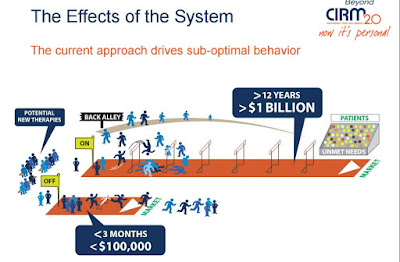The five-year award is aimed at helping to make California a world leader in clinical application of stem cell research. It is also linked to the ambitious Alpha Clinic program of the California Institute for Regenerative Medicine (CIRM), as the Oakland-based stem cell agency is known. All CIRM projects initially will receive preferential treatment from the awardee although other outside efforts will be serviced later.
The winning firm is supposed to provide regulatory, operational and consultative services to clinical trial sponsors and "accelerate the regulatory review process and the conduct of high quality clinical trials using stem cell treatments," an agency document said.
The agency's blue-ribbon, out-of-state reviewers gave the firm's application a score of 89 out of 100 during a closed door meeting earlier this spring, according to a presentation prepared for the CIRM board meeting next week. The cut-off line was 85. The other three applicants fell below that level.
A summary of the review published by the agency said,
"The applicant lacks expertise in stem cell clinical and product development."It stated,
"While there is a lack of stem cell experience in the team, there is a clear commitment and plan to aggregate stem cell expertise and leverage knowledge gained over time to build a center focused on accelerating progression of stem cell projects toward commercialization."Concern was also expressed about top level management. The summary said,
"Reviewers were not convinced that the proposed center director is sufficiently experienced to direct the CIRM Accelerating Center. However, there is great confidence in the parent organization, which alleviated some of the concerns."Nonetheless, the reviewers' bottom line indicated that they believed their qualms could be overcome. The summary said,
"Reviewers thought the applicant to be highly capable of delivering the required core services and establishing and sustaining the proposed CIRM Accelerating Center. More importantly, reviewers thought the applicant had given great thought about how best to partner with CIRM to accelerate delivery of stem cell treatments to patients with unmet medical needs by leveraging CIRM Infrastructure Programs and offering innovative and impactful preclinical and clinical development resources to both CIRM and non CIRM-funded investigators."It is customary for the agency to withhold the names of winning applicants until the board formally ratifies the reviewers' decisions. That will come next Wednesday at the board's public meeting in Berkeley. The names of competing applicants are generally withheld indefinitely by the agency, although the agency has made exceptions.
CIRM reviewers make the de facto decisions on all applications, always behind closed doors. In the agency's 11-year history, the agency's governing board has almost never overridden a positive funding decision by its reviewers.
The reviewers' economic and professional interests, however, are not disclosed publicly. At most state agencies, financial decision-makers are required to disclose their economic interests.
The review process in this case did deviate somewhat from other past practices. CIRM applicants are normally evaluated based only on a written submission. In this case, however, applicants were permitted to make a 20-minute, face-to-face presentation to reviewers, who then had a chance to ask questions. The agency's regular practice is to withhold the identity of specific reviewers from applicants.
The goal of the "Accelerating Center" is to speed submissions to regulators and assist with clinical trial management, the tests that are conducted before regulators will approve a therapy for widespread public use. The center is also supposed to deal with data management, biostatistical and analytical services.
It will be a key component in the Alpha Clinics Network, a $34 million CIRM project. The Alpha Clinics were pushed forward with the intent of making the Golden State the global leader in stem cells, although the plan was scaled down financially from an original $70 million. (See here and here for more).
Three centers were funded: a combined project involving UCLA and UC Irvine and one each at the City of Hope in Duarte in the Los Angeles area and UC San Diego.
Here is a link to a CIRM presentation made for applicants in the $15 million Accelerating Center round. Here is a link to the CIRM request for applications.
Here is a link to CIRM's Alpha Clinics Network page with interviews of some of the leaders in the program.












